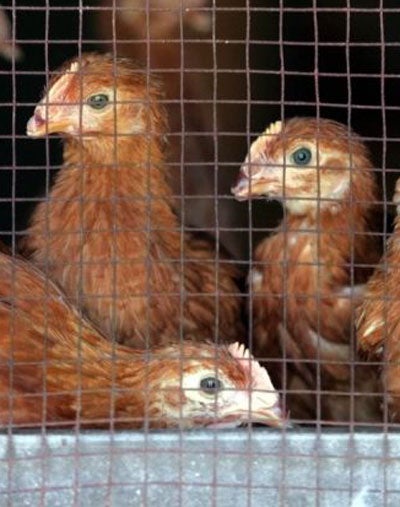Britain on alert as bird flu heads towards Europe

Britain is to begin testing wild birds for avian flu as EU officials meet today to discuss the growing health threat from a deadly strain of the virus.
Scientists fear that a lethal form of bird flu that can infect humans may be brought into the country this autumn by migrating waterfowl.
Senior European officials are meeting in Brussels to assess options for protecting domestic poultry from the virus and the Government's chief veterinary officer is to meet British ornithologists tomorrow to discuss a strategy for testing wild birds.
Fears about the spread of the H5N1 strain of avian flu which has killed more than 60 people in Asia have intensified since its discovery in migratory birds and domestic poultry in central Russia this summer.
Scientists believe migrating birds are increasing the global range of the virus, which is thought to have originated in China and spread to south-east Asia, infecting scores of people.
Experts said that if the virus spreads further west to the European side of the Ural mountains then there is a strong possibility that birds migrating from Russia to Britain this autumn could spread avian flu to free-range British poultry.
The World Health Organisation (WHO) has warned that the increasing spread of the virus has brought the prospect of another human pandemic closer than at any time since 1968 the year of the last flu pandemic.
Senior scientists have advised the Government against a mass cull of wild birds because it would prove ineffective in stemming the spread of the virus to poultry. Instead they have emphasised the importance of knowing whether the H5N1 virus is present in the wild.
The tests will analyse swabs taken from wild birds for the presence of the lethal strain. The birds to be surveyed include wild duck, geese, swans and possibly gulls, which are all known or thought to be capable of carrying the virus and of transmitting it to domestic poultry.
Ministers have so far resisted calls to limit the spread of avian flu to domestic poultry by requiring farmers to keep free-range birds under cover a measure that could affect the valuable free-range status of the stock.
A spokeswoman for the Department for Food and Rural Affairs said the risk from wild birds is considered too low to warrant a ban on keeping free-range birds outside, although the option is under constant review. "It is disproportionate to keep them indoors but if the virus spreads west of the Urals we would have to consider putting poultry under cover," she said.
Britain has about 120 million poultry, including chickens, turkeys, ducks and geese, worth £1.3bn a year. About 25 per cent of the egg-laying flock worth £350m a year are kept outdoors and about 10 per cent of chickens raised for meat are free-range.
Dutch farmers have already moved their free-range stock indoors to prevent contact with wild birds that may be carrying the virus. German farmers have been told to take similar precautions by 15 September.
The Dutch have taken the action unilaterally because of a devastating outbreak of a different strain of avian flu in 2003 which resulted in the slaughter of 30 million chickens. During that outbreak, 89 people in the Netherlands mostly poultry workers and their close contacts became infected although only one person, a vet, died of pneumonia.
In the epidemic in Asia, more than 112 people have been infected, mostly in Vietnam and Thailand, but there has also been a small number of cases in Cambodia and Indonesia.
So far there have only been a few instances of transmission between people but the greatest fear is that a more transmissible virus will evolve that could cause a pandemic of a highly lethal strain of human influenza.
The WHO has warned of the possibility of a devastatingly lethal pandemic caused by the H5N1 strain of avian flu.
"The expanding geographical presence of the virus is of concern as it creates further opportunities for human exposure," it said. "Each human case increases opportunities for the virus to improve its transmissibility. The emergence of an H5N1 strain that is readily transmitted among humans would mark the start of a pandemic."
Subscribe to Independent Premium to bookmark this article
Want to bookmark your favourite articles and stories to read or reference later? Start your Independent Premium subscription today.

Join our commenting forum
Join thought-provoking conversations, follow other Independent readers and see their replies